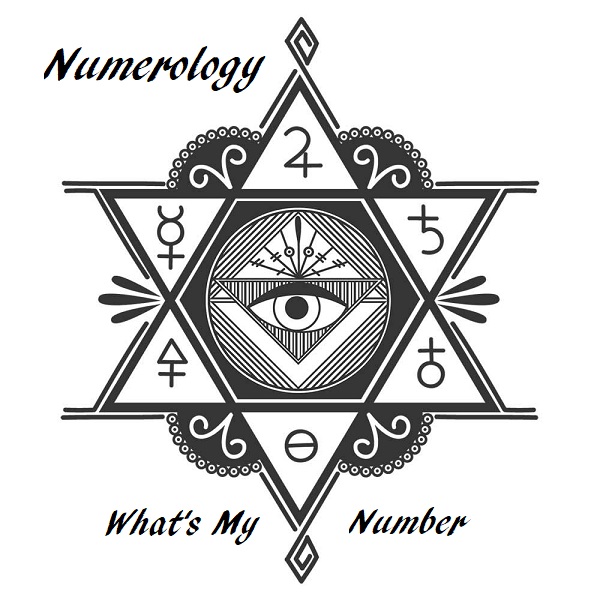Reiki Symbols and Their Meaning
Unravelling the Hidden Meanings Behind 5 Reiki Symbols
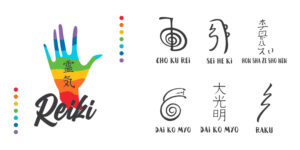 Unlocking the ancient wisdom of Reiki symbols holds the key to a mystical world of healing and enlightenment. In this awe-inspiring article, we delve deep into the hidden meanings behind five powerful Reiki symbols, shining a light on their transformative power and unveiling the secrets they hold.
Unlocking the ancient wisdom of Reiki symbols holds the key to a mystical world of healing and enlightenment. In this awe-inspiring article, we delve deep into the hidden meanings behind five powerful Reiki symbols, shining a light on their transformative power and unveiling the secrets they hold.
Each symbol carries its unique energy and purpose, offering practitioners a profound connection to the universal life force energy. From the empowering Cho Ku Rei symbol, known for its ability to amplify energy and cleanse negativity, to the harmonizing Sei Hei Ki symbol, which aids in emotional healing and balance, these sacred symbols are gateways to spiritual growth and holistic well-being.
We will unravel the mysteries behind the Dai Ko Myo symbol, often referred to as the symbol of enlightenment, and explore the magical connection it provides to higher consciousness. Additionally, we will unlock the hidden meanings behind the Hon Sha Ze Sho Nen symbol, which enables practitioners to bridge time and space and connect with healing energy across distances.
Get ready to embark on a journey of discovery as we decode the powerful Reiki symbols, offering insights into their ancient origins and empowering readers to harness their transformative potential.
Understanding the Importance of Symbols in Reiki
Symbols are an essential part of Reiki, as they allow the practitioner to access different aspects of the universal life force energy. Symbols are not just arbitrary shapes, but representations of specific frequencies and vibrations that can enhance the healing process. Symbols can also help the practitioner to focus their intention, connect with their intuition, and communicate with the higher self and the divine source.
There are many symbols in Reiki, but the most commonly used ones are the four symbols of the Usui system: Cho Ku Rei, Sei He Ki, Hon Sha Ze Sho Nen, and Dai Ko Myo. Each symbol has a unique meaning, function, and application. Cho Ku Rei is the power symbol, which increases the flow of energy and activates the other symbols. Sei He Ki is a mental and emotional symbol, which balances the mind and emotions and helps to release negative patterns. Hon Sha Ze Sho Nen is the distance symbol, which transcends time and space and allows the practitioner to send Reiki to anyone, anywhere, anytime. Dai Ko Myo is the master symbol, which represents enlightenment and spiritual growth and connects the practitioner to the highest level of Reiki.
Symbols are not only used during Reiki sessions but also in daily life. They can be drawn on objects, places, or people to protect, bless, or heal them. They can also be meditated upon, chanted, or visualized to deepen one’s understanding and connection with them. Symbols are powerful tools that can enhance one’s Reiki practice and personal development.
The Five Reiki symbols and their Meanings
Reiki is a form of energy healing that originated in Japan in the late 19th century. It involves the use of symbols to channel and direct the universal life force energy (qi or ki) for healing purposes. There are five main symbols in the Usui Reiki system, each with its meaning and function. They are:
- Cho Ku Rei: The power symbol. It is used to increase or decrease the power of the Reiki energy, depending on the direction it is drawn. It can also be used to cleanse, purify, protect, or empower a person, place, or situation. It is often drawn at the beginning and end of a Reiki session to activate and seal the energy. Its shape resembles a coil or a spiral.
- Sei He Ki: The harmony symbol. It is used to balance and heal the emotional and mental aspects of a person. It can also be used to clear negative emotions, thoughts, or memories that may be blocking the flow of energy. It can help with issues such as stress, anxiety, depression, addiction, or trauma. Its shape resembles a wave or a bird’s wing.
- Hon Sha Ze Sho Nen: The distance symbol. It is used to send Reiki energy across time and space, regardless of physical distance or barriers. It can also be used to heal past, present, or future events, as well as karmic connections or soul contracts. It can help with issues such as remote healing, manifestation, or spiritual guidance. Its shape resembles a pagoda or a tower.
- Dai Ko Myo: The master symbol. It is used to access the highest level of Reiki energy and connect with one’s true self and higher consciousness. It can also be used to initiate and teach others in Reiki, as well as enhance one’s spiritual growth and development. It can help with issues such as enlightenment, awakening, or transformation. Its shape resembles a lotus flower or a mandala.
- Raku: The completion symbol. It is used to ground and stabilize the energy after a Reiki session. It can also be used to cut cords or attachments that may be draining or harmful to one’s energy field. It can help with issues such as grounding, protection, or closure. Its shape resembles a lightning bolt or a zigzag.
These symbols are not meant to be worshipped or idolized, but rather used as tools to focus one’s intention and attention on the healing process. They are activated by drawing them either in the air, on the palms, or on the body of the recipient, while mentally or verbally repeating their names or meanings.
Symbol 1: Cho Ku Rei – Power Symbol
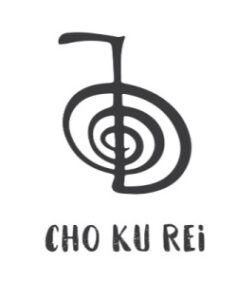 Cho Ku Rei is a symbol used in Reiki, a form of energy healing that originated in Japan. The name of the symbol means “put the power of the universe here” and it is often referred to as the power symbol. Cho Ku Rei is used to activate, empower and enhance the healing effects of Reiki. It can also be used for protection, cleansing and grounding.
Cho Ku Rei is a symbol used in Reiki, a form of energy healing that originated in Japan. The name of the symbol means “put the power of the universe here” and it is often referred to as the power symbol. Cho Ku Rei is used to activate, empower and enhance the healing effects of Reiki. It can also be used for protection, cleansing and grounding.
The symbol consists of a spiral that represents the flow of energy, and a vertical line with three horizontal bars that represent the three aspects of body, mind and spirit. The symbol can be drawn or visualized in different ways, such as clockwise or counterclockwise, with or without the spiral, and with different colours. The intention and focus of the practitioner are more important than the exact shape of the symbol.
Cho Ku Rei can be applied in various situations, such as before and after a Reiki session, on specific parts of the body, on objects, spaces or situations, and as a mantra or affirmation. The symbol can help to increase the power and effectiveness of Reiki, to clear negative energy and blockages, to protect oneself and others from harm, to ground oneself and connect with the earth, and to manifest one’s goals and desires.
Symbol 2: Sei He Ki – Emotional Healing Symbol
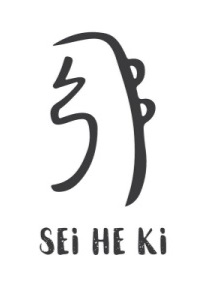 Sei He Ki is the second symbol in the Reiki system of natural healing. It is also known as the emotional healing symbol, as it helps to balance the mental and emotional aspects of a person. Sei He Ki can be used to heal negative emotions, such as anger, fear, sadness, or anxiety, that may be affecting one’s physical health or well-being. Sei He Ki can also be used to enhance positive emotions, such as love, joy, peace, or gratitude, that may be lacking or blocked in one’s life.
Sei He Ki is the second symbol in the Reiki system of natural healing. It is also known as the emotional healing symbol, as it helps to balance the mental and emotional aspects of a person. Sei He Ki can be used to heal negative emotions, such as anger, fear, sadness, or anxiety, that may be affecting one’s physical health or well-being. Sei He Ki can also be used to enhance positive emotions, such as love, joy, peace, or gratitude, that may be lacking or blocked in one’s life.
Sei He Ki is composed of two parts: the left side represents the moon, and the right side represents the sun. Together, they symbolize the harmony of yin and yang, the feminine and masculine energies, and the subconscious and conscious minds. Sei He Ki helps to integrate these polarities and create a state of balance and wholeness.
To use Sei He Ki, one can draw or visualize the symbol over the affected area of the body, or over the heart chakra. One can also chant or whisper the name of the symbol three times, or repeat a positive affirmation or mantra related to the desired outcome. Sei He Ki can be used alone or in combination with other Reiki symbols, depending on the situation and the intention of the practitioner.
Symbol 3: Hon Sha Ze Sho Nen – Distance Healing Symbol
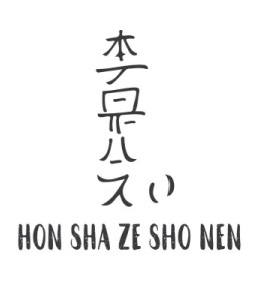 Hon Sha Ze Sho Nen is the third symbol taught in Reiki, and it is also known as the distance healing symbol. It allows the practitioner to send Reiki energy across time and space, transcending the physical limitations of matter. The symbol consists of five kanji characters that form a mantra, meaning “no past, no present, no future” or “the Buddha in me reaches out to the Buddha in you”. By drawing or visualizing this symbol, the practitioner can connect with the recipient’s energy field and channel Reiki to them, regardless of where they are or when they need it. Hon Sha Ze Sho Nen can also be used to heal past traumas, karmic issues, or future events that may cause anxiety or fear. It is a powerful symbol that enhances the effectiveness and scope of Reiki healing.
Hon Sha Ze Sho Nen is the third symbol taught in Reiki, and it is also known as the distance healing symbol. It allows the practitioner to send Reiki energy across time and space, transcending the physical limitations of matter. The symbol consists of five kanji characters that form a mantra, meaning “no past, no present, no future” or “the Buddha in me reaches out to the Buddha in you”. By drawing or visualizing this symbol, the practitioner can connect with the recipient’s energy field and channel Reiki to them, regardless of where they are or when they need it. Hon Sha Ze Sho Nen can also be used to heal past traumas, karmic issues, or future events that may cause anxiety or fear. It is a powerful symbol that enhances the effectiveness and scope of Reiki healing.
Symbol 4: Dai Ko Myo – Master Symbol
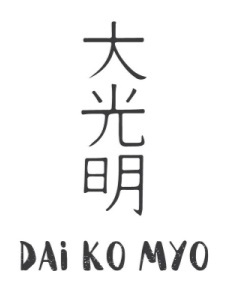
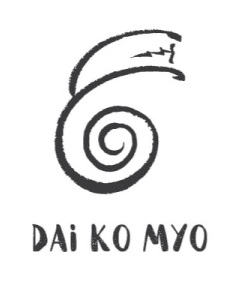 Dai Ko Myo is the fourth and most powerful symbol in Reiki, the Japanese healing system. It is also known as the Master Symbol because it represents the highest level of spiritual enlightenment and connection to the universal life force. Dai Ko Myo means “great shining light” or “great bright light”. It is used to activate the crown chakra, which is the centre of spiritual awareness and wisdom. Dai Ko Myo symbolizes the unity of body, mind and spirit, and the harmony of all creation. It can also be used to heal the soul and the karmic patterns that may affect one’s life. Dai Ko Myo is usually drawn with a spiral and four strokes, representing the four elements of earth, water, fire and air. The spiral signifies the infinite nature of energy and consciousness, and the connection to the source of all life. Dai Ko Myo can only be used by Reiki masters who have received the attunement from another master. It is considered a sacred symbol that should be treated with respect and reverence. Dai Ko Myo can be used to enhance any healing session, whether for oneself or others. It can also be used to empower other symbols, objects or places with Reiki energy. Dai Ko Myo is a symbol of love, compassion and wisdom, and it can help one to achieve personal growth and spiritual transformation.
Dai Ko Myo is the fourth and most powerful symbol in Reiki, the Japanese healing system. It is also known as the Master Symbol because it represents the highest level of spiritual enlightenment and connection to the universal life force. Dai Ko Myo means “great shining light” or “great bright light”. It is used to activate the crown chakra, which is the centre of spiritual awareness and wisdom. Dai Ko Myo symbolizes the unity of body, mind and spirit, and the harmony of all creation. It can also be used to heal the soul and the karmic patterns that may affect one’s life. Dai Ko Myo is usually drawn with a spiral and four strokes, representing the four elements of earth, water, fire and air. The spiral signifies the infinite nature of energy and consciousness, and the connection to the source of all life. Dai Ko Myo can only be used by Reiki masters who have received the attunement from another master. It is considered a sacred symbol that should be treated with respect and reverence. Dai Ko Myo can be used to enhance any healing session, whether for oneself or others. It can also be used to empower other symbols, objects or places with Reiki energy. Dai Ko Myo is a symbol of love, compassion and wisdom, and it can help one to achieve personal growth and spiritual transformation.
Symbol 5: Raku – Grounding Symbol
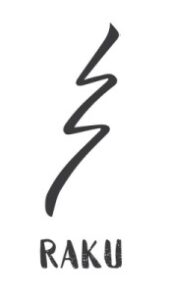 Raku is the fifth and final symbol taught in the Usui Reiki system. It is also known as the “fire serpent” or the “lightning bolt”. Raku is used to seal the Reiki energy at the end of a session and to disconnect the practitioner from the client energetically. Raku symbolizes the completion of the healing process and the return to the physical reality.
Raku is the fifth and final symbol taught in the Usui Reiki system. It is also known as the “fire serpent” or the “lightning bolt”. Raku is used to seal the Reiki energy at the end of a session and to disconnect the practitioner from the client energetically. Raku symbolizes the completion of the healing process and the return to the physical reality.
Raku is drawn with a vertical line that represents the connection between heaven and earth, and a zigzag line that represents the movement of energy. Raku is usually drawn from the crown chakra to the feet, or from the feet to the crown chakra, depending on the intention of the practitioner. Raku can also be used to ground oneself, to clear negative energy, and to enhance spiritual awareness.
Raku is a powerful symbol that should be used with respect and caution. It is not recommended to use Raku on oneself or others without proper training and attunement. Raku can cause strong reactions in some people, such as emotional release, physical sensations, or spiritual awakening. Raku should be used only when necessary and with the consent of the client.
How to use Reiki Symbols in Practice
Reiki symbols are tools that can enhance the flow of energy and healing in a Reiki session. They are not magic or secret, but rather sacred and powerful. They can be used to focus the intention of the practitioner and the client, to connect with different aspects of the universal life force, and to address specific issues or goals.
There are many ways to use Reiki symbols in practice, but here are some general guidelines:
- Before using any symbol, you should be attuned to it by a Reiki master. This means that you have received the energy and permission to use the symbol in your Reiki work.
- You should always ask for the permission and consent of the client before using any symbol on them. You should also explain what the symbol means and how it can help them.
- You can draw, visualize, or chant the symbol in your mind, or use your hand or a tool (such as a crystal, wand, or pen) to trace it on the client’s body or in the air. You can also write or print the symbol on a paper and place it under the client’s pillow, chair, or mat.
- You can use one or more symbols at a time, depending on your intuition and the needs of the client. You can also combine them with other Reiki techniques, such as hand positions, breathing, affirmations, or meditation.
- You should always use the symbols with respect, gratitude, and love. You should not use them for selfish or harmful purposes, or without the highest good of all involved.
Some examples of Reiki symbols and how to use them are:
- Cho Ku Rei: This is the power symbol, which can increase or decrease the energy flow. It can also protect, cleanse, and empower. You can use it at the beginning and end of a session, or whenever you need more energy or focus. You can also use it to clear negative energy from a person, place, or object, or to charge water, food, or medicine with Reiki.
- Sei He Ki: This is the emotional and mental healing symbol, which can balance and harmonize emotions and thoughts. It can also help with memory, learning, creativity, and communication. You can use it to heal emotional trauma, release stress, anxiety, fear, anger, or sadness, or enhance positive emotions and mental clarity. You can also use it to heal relationships, break bad habits, or manifest your goals.
- Hon Sha Ze Sho Nen: This is the distance healing symbol, which can transcend time and space. It can also connect with the higher self, soul, and spirit. You can use it to send Reiki to anyone, anywhere, anytime, past, present, or future. You can also use it to heal karmic issues, access past lives, or enhance spiritual awareness and growth.
- Dai Ko Myo: This is the master symbol, which represents the ultimate source of Reiki. It can also activate and enhance the other symbols. You can use it to deepen your connection with Reiki, increase your healing abilities and intuition, and access higher levels of consciousness and wisdom. You can also use it to initiate others into Reiki or attune yourself to new symbols.
- Raku: This is a spiritual token that plays an essential role in finalizing and implementing the energy and information one gains through the Reiki attunement. It helps remove energy blockages while providing a solid grounding effect when regularly included in therapy. Although somewhat contradictory, it also acts as an element of completion and separation within the attunement and Reiki sessions.
Conclusion: Harnessing the Power of Reiki Symbols
Reiki symbols are powerful tools that can help you enhance your healing practice and connect with the universal life force. They can also help you achieve specific goals, such as protection, cleansing, harmony, and manifestation. By learning how to use Reiki symbols, you can access different levels of energy and vibration, and channel them for your highest good.
Reiki symbols are not magic; they are sacred keys that unlock the doors to your inner wisdom and potential. They require respect, intention, and practice to use them effectively. The more you work with Reiki symbols, the more you will discover their benefits and applications. Reiki symbols are not only for Reiki practitioners; they are for anyone who wants to live a more balanced, harmonious, and fulfilling life.

